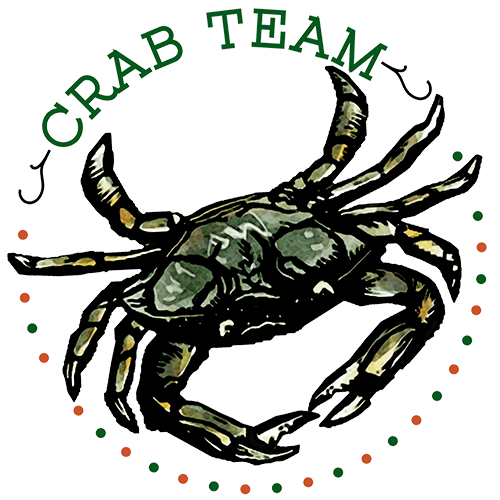The Annual Tides of March Auction is one of the highlights of the year for us at the Port Townsend Marine Science Center (PTMSC). It's an intense amount of hard work — coordinating logistics, soliciting donations from local businesses and community members, and organizing volunteers — but always deeply worth it.
On Saturday March 12, all those months of hard work finally paid off. I love the excitement that fills the air as the final preparations are completed; the last sea-star napkin is set just right, the stage lights are up and ready, and the guests begin funneling through the doors in their own whirl of exhilaration towards the registration table.
Greeting old friends I haven't seen in a while, with bright smiles and warm hugs, is one of the best parts of working at the Marine Science Center. The people make this event what it is — the people who give their time and money to support their values, showing their dedication to our mission of inspiring conservation of the Salish Sea — they are the ones who inspire me.
This year was simply amazing. It was our second year coming back "home" to the Fort Worden Commons, which continues to prove itself the right choice. Guests were delighted with a scrumptious dinner of smoked salmon pasta or a mushroom lentil
dish created by Fort Worden Catering.
The items up for bid ranged from trips to the Caribbean and bottles of wine donated by our Board Members, to beautiful handcrafted items such as quilts and jewelry.
The room was decorated beautifully with green and blue ceiling lights, fishbowl centerpieces with floating candles, and napkins folded into the shape of sea stars, transforming the room into an "Undersea Spree."
Oh, and the desserts! They were wonderful! The Dessert Dash was a mad rush to get the "best" desserts even though every single one was incredible. (The chocolate raspberry cheesecake was my personal favorite.)
Continuing the tradition, our AmeriCorps team also developed an awesome opening skit to kick-off the live auction. In this skit, they transformed themselves into creatures from the Marine Exhibit, and wanting to experience freedom, they escaped
from the tanks away from the
AmeriCorps members (as portrayed by yours truly, and Maintenance Coordinator, Phil Dinsmore), only to discover their dream was not as they hoped. The Salish Sea was filled with toxic chemicals, plastics, and Canadian poop (eh?), and they decided their rightful place was back in the exhibit to educate visitors about protecting the environment.

The Make-a-Difference portion of the evening is always a humbling, heartfelt experience, in which two outstanding youth members of our community share stories of their involvement with PTMSC. Linnea Harrington, grand-niece of the late Eric Harrington, shined as she told the story of her parents meeting at PTMSC, forming her connection and desire to learn right there from the start. And Tusker Behrenfeld delighted us with humorous stories of his love for grunt sculpins and seeing orcas up close.
Stories like theirs are the reasons we do what we do; these children are the future, and they have the power to make change. That night, as part of Make-a-Difference, we raised an astonishing $60,000 to continue supporting our education programs (a 50% increase over last year!). Those two students deserved their standing ovation!
Overall, it was an incredible night. The combined efforts of all our amazing staff and volunteers helped us make this year a record-breaking success. Our grand total reached $126,000, shattering our previous record by 14%! Wow!
We could not have done it without the support of our incredible PTMSC community. Thank you, from the bottom of our hearts, to our dedicated volunteers (in no particular order):
Pete & Alexandra ter Horst, Alan Rammer, Anne Murphy, Ashley MacKenzie, Kate Marshall, Lucas Hart, Wilma Hackman, Carla Vander Ven, Betty Petrie, Jan Mier, Sally Davis, Claude Manning, Davis Fogerty, Megan Veley, Diane Baxter, Wendy Nordquist, Judy D'Amore, Gabriele Sanchez, Kateri Schmerler, Nan Toby Tyrell, Katherine Jensen, Rob Wamstad, Dan & Soozie Darrow, Megan Addison, Nathan Trimble, Noreen Parks, Patrick Colleran, Sue Long, Tina Scheufler, Nancy Jamieson, Linda Heuertz, Jenifer DeWolf, Mallory Wilmot, Linda Martin, and Gordon James.
Check out
all the photos from the evening on Flickr!
THANK YOU!
Photos by Amy Johnson
—
AMY JOHNSON is the Volunteer Coordinator at the Port Townsend Marine Science Center. Interested in volunteering? Learn how you can
get involved!









